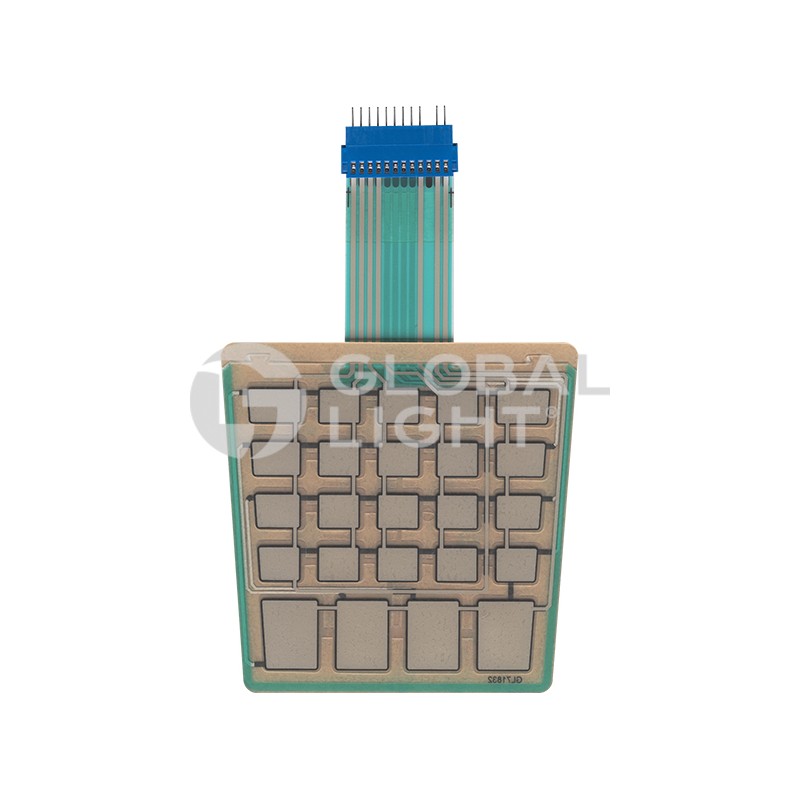Top Features to Look for in a High-Quality Membrane Switch
Top Features to Look for in a High-Quality Membrane Switch
Blog Article
Recognizing Membrane Layer Switches Over: The Secret to Reputable and resilient Controls

What Are Membrane Switches?
Membrane switches are an advanced remedy in the world of user interface innovation, integrating performance and layout flawlessly. These devices serve as an interface between users and electronic systems, integrating several elements into a small style. Commonly created from adaptable, slim layers of materials, membrane switches are designed to respond to touch, enabling customers to connect with equipment and digital tools properly.
The key components of a membrane layer switch include a printed circuit layer, visuals overlay, and a spacer layer that protects against unplanned activation. The visuals overlay can be personalized to show brand identification or customer choices, improving aesthetics while making certain use. Membrane layer switches are commonly made use of in numerous applications, including medical tools, customer electronics, and commercial devices, owing to their toughness and resistance to environmental factors such as dampness and dirt.
One of the vital benefits of membrane buttons is their capability to endure wear and tear, making them excellent for high-traffic atmospheres. Additionally, they are light-weight and need very little space, enabling ingenious designs in item advancement. In general, membrane layer changes represent a practical and efficient selection for modern-day electronic user interfaces, marrying modern technology with user-centric style concepts.
How Membrane Layer Switches Job
The operation of membrane layer switches over depend upon a straightforward yet efficient device that translates individual input right into electronic signals. These buttons consist of numerous layers, usually consisting of a graphic overlay, a spacer layer, and a circuit layer. When an individual presses the button, the top layer warps, permitting a conductive element in the circuit layer to reach a corresponding conductive pad on the underside of the visuals overlay. This call closes the circuit and sends a digital signal to the tool, indicating that the button has actually been activated.
The design of membrane switches can vary, however they commonly incorporate domes or tactile elements to offer comments to the individual, improving the total experience - membrane switch. The products made use of in membrane layer buttons, such as polyester or polycarbonate, add to their sturdiness and resistance to ecological aspects, consisting of dampness and dirt. In addition, the published circuits are typically encapsulated, which protects them from wear and tear over time.
Advantages of Membrane Switches

In addition, membrane layer buttons are known for their resilience. Built from robust materials, they are resistant to dust, wetness, and physical wear, which dramatically expands their life-span contrasted to traditional mechanical buttons. This durability makes them particularly suitable for high-traffic environments and applications requiring longevity.
Another significant advantage is the simplicity of cleaning and maintenance. The smooth surface of membrane switches over decreases dirt buildup and is usually resistant to spills, making them excellent for setups that need regular sanitization.
Furthermore, membrane Source buttons use a structured profile, resulting in a thinner design that can be incorporated right into various devices without including bulk. This feature not just improves the aesthetic appeal yet likewise adds to an extra ergonomic item design.
Applications of Membrane Layer Buttons
Versatile and user-friendly, membrane buttons discover applications throughout a large range of sectors, consisting of medical tools, consumer electronic devices, and industrial tools. In the medical field, these buttons are integral to tools such as diagnostic tools, client monitoring systems, and mixture pumps, where reliability and simplicity of cleansing are crucial. Their capability to preserve and withstand extreme environments performance makes them perfect for blog here such applications.

In consumer electronic devices, membrane switches are utilized in items like microwaves, washing equipments, and push-button controls - membrane switch. Their streamlined design enables for instinctive interface, improving the general customer experience while providing toughness and resistance to deterioration
Industrial tools additionally gains from membrane switches, especially in control panels for equipment and automation systems. These buttons offer protection against dirt and dampness, ensuring consistent performance in difficult settings. Their customizable functions enable makers to customize them to certain functional requirements, boosting performance and capability.
Picking the Right Membrane Layer Switch Over
When picking a membrane layer button, it is necessary to take into consideration numerous variables that affect efficiency and suitability for particular applications. The main considerations include ecological problems, tactile comments, sturdiness, and style specs.
First, examine the operating setting; buttons revealed to dampness, chemicals, or severe temperature levels need particular materials to ensure long life and performance. Next, review the demand for tactile feedback. Relying on customer communication, some applications may gain from a responsive response to validate activation, while others may prefer a non-tactile layout for aesthetic reasons.
Resilience is an additional important aspect; membrane buttons ought to be designed to stand up to frequent usage, impacts, and abrasion. Make certain the chosen button can withstand the anticipated lifecycle, especially in high-usage circumstances.

Final Thought
In conclusion, membrane changes offer as important parts in the design of resilient and trusted control systems across various markets. The adaptability of membrane switches over permits for tailored services that satisfy details functional needs, strengthening their relevance in modern-day innovation.
Membrane layer switches represent a vital facet of modern-day user interface layout, mixing functionality with resilience in various applications.Membrane switches are an advanced service in the realm of individual interface innovation, integrating performance and style effortlessly. Commonly created from adaptable, slim layers of products, membrane layer buttons are created to react to touch, allowing individuals to engage with machinery and electronic devices effectively.
The design of membrane layer buttons can site here vary, but they commonly integrate domes or tactile aspects to supply responses to the individual, improving the general experience.In conclusion, membrane switches over offer as crucial elements in the style of resilient and reputable control systems throughout numerous markets.
Report this page